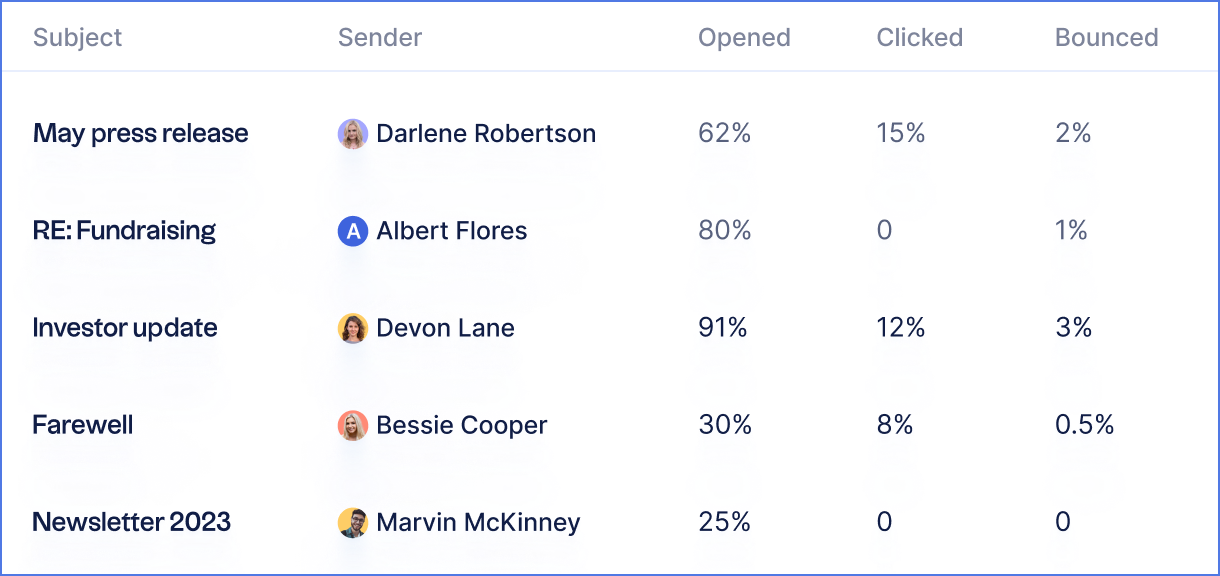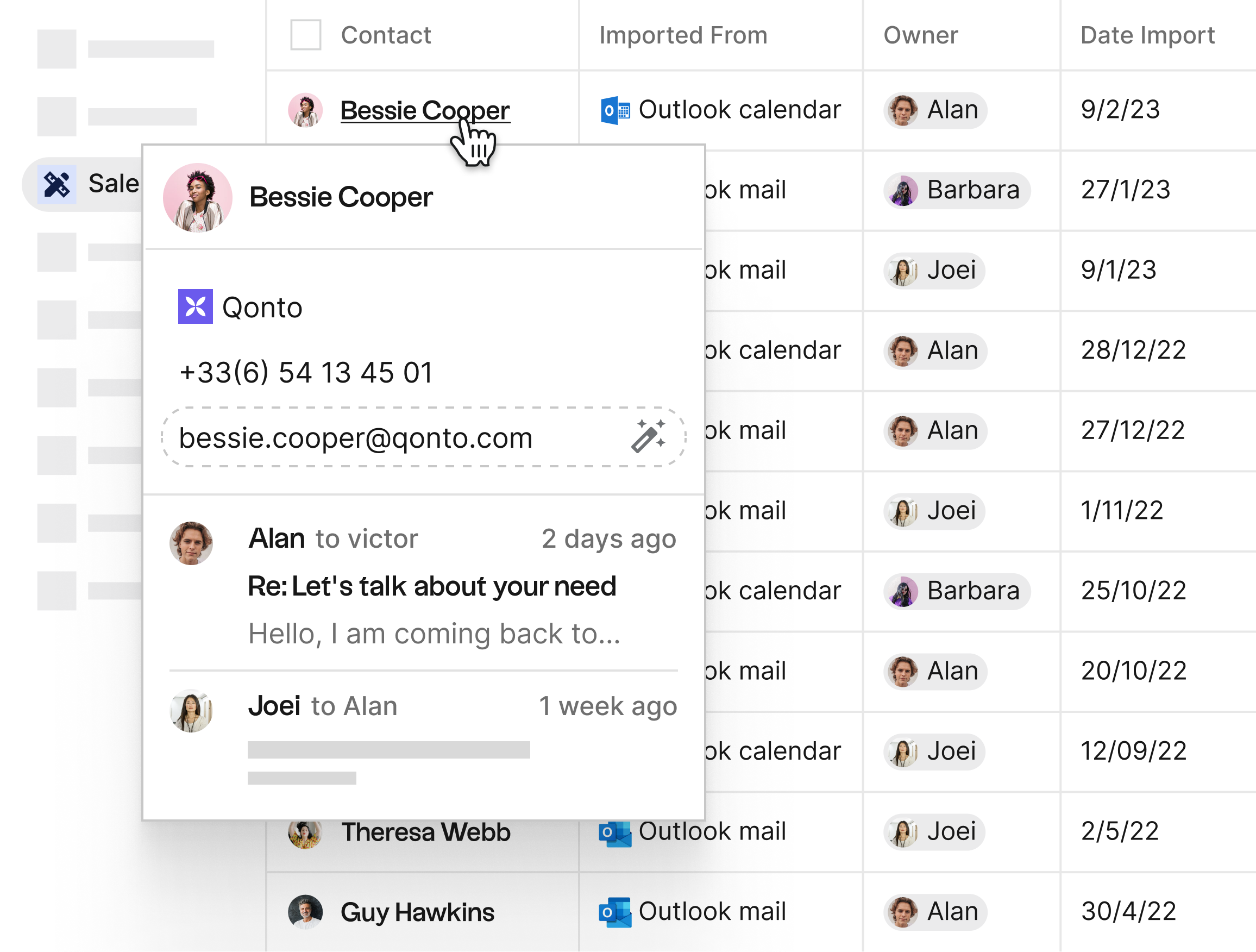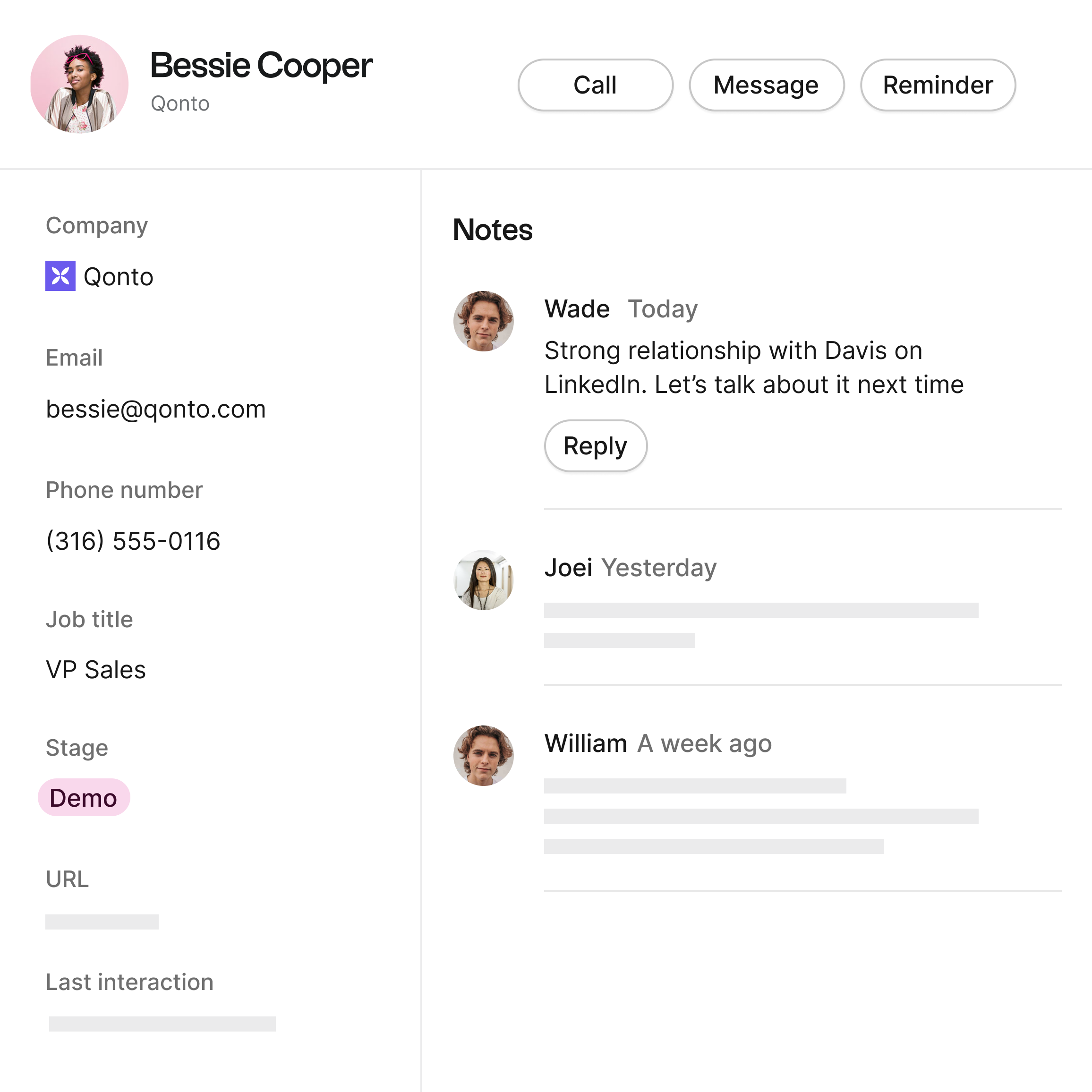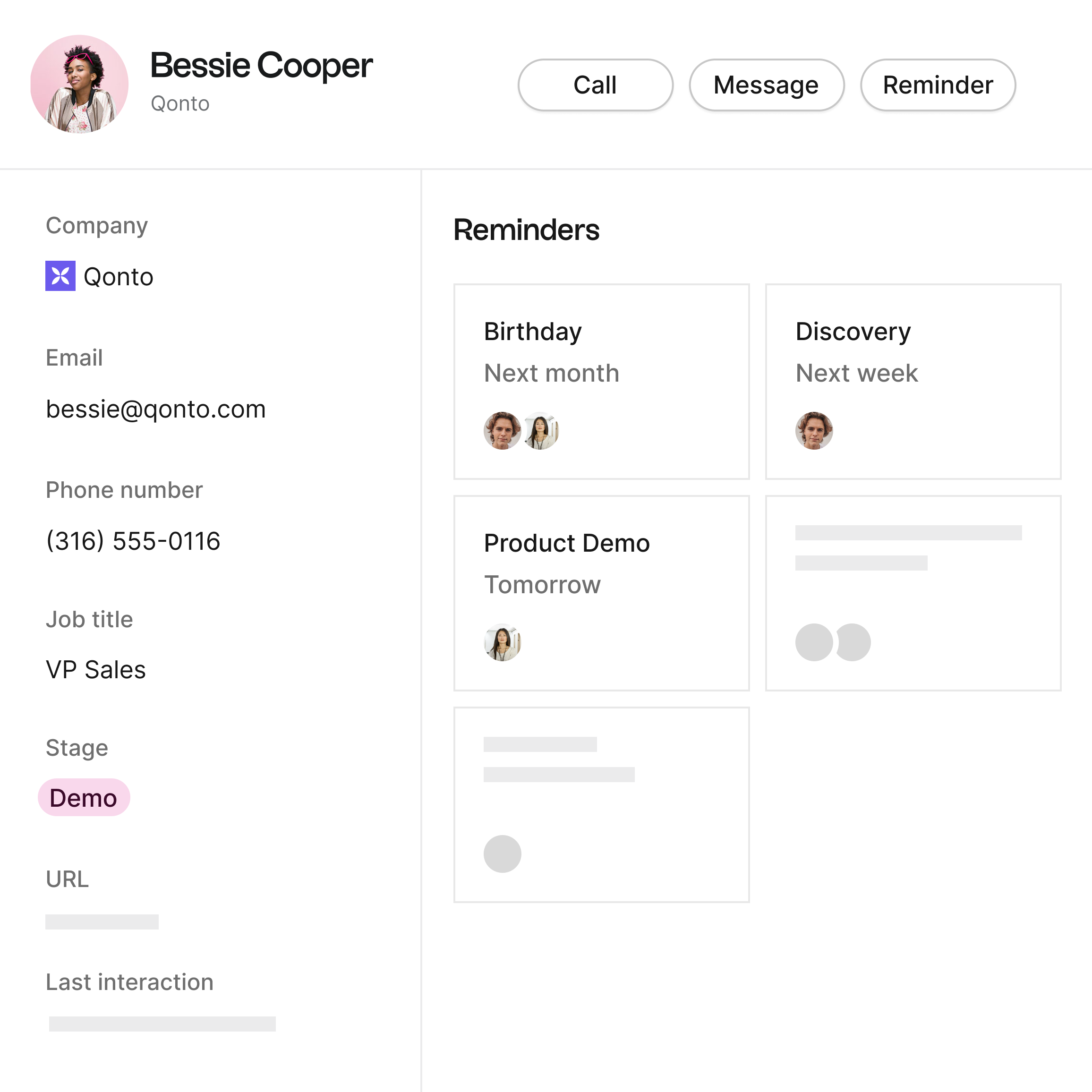Discover folk - the CRM for people-powered businesses
Are you struggling to keep track of your sales outreach efforts? Fret not! With the right outreach tracker, you can effectively manage your leads, improve sales performance, and collaborate seamlessly within your team.
Dive into this comprehensive guide to learn how to create an effective outreach tracker and explore alternative solutions. Get ready to revolutionize your sales process!
Short Summary
- Tracking outreach efforts is essential for enhanced sales performance, better lead management and increased collaboration.
- Choose an outreach tracker based on factors such as size, features, compatibility with Gmail & Outlook and activity management. Tools like folk let you do that seamlessly
- Maintain the accuracy of your tracker by regularly entering data into it. Review & adjust periodically.
| Main points |
|---|
|
What is an outreach tracker?
An outreach tracker is a tool or system that helps you monitor and manage outreach efforts, whether for sales, marketing, PR, or networking. It keeps track of who you've contacted, when you last followed up, and the status of each interaction.
Using an outreach tracker prevents missed follow-ups, improves response rates, and streamlines communication.
You can track emails, LinkedIn messages, cold calls, or any outreach channel in one place. Many tools, like spreadsheets or CRM software, offer outreach tracking features to keep your outreach organized and effective.
The Importance of Tracking Outreach Efforts
Tracking outreach efforts is the secret sauce to sales success for growing sales teams. Why, you ask? It helps enhance sales performance, manage leads productively, and augment collaboration between teams of 20-50 people. By keeping track of the last contact date, follow ups, and other relevant information such as the follow up date, you can identify trends and make data-driven decisions for future contacts.
A well-organized outreach tracker not only streamlines your sales process, but also ensures you're reaching the right person at the right time.

Improved Sales Performance
An effective outreach tracking spreadsheet enables sales teams to monitor revenue generated from deals closed, providing a clear revenue breakdown for easy understanding.
You want to know
- How many people have been contacted (leads)
- How many replied
- How many clicked on the emails
- How many bounced
- How many took a demo or a call (if any)
- How many converted from demo to a paid account
And for each metric, be able to know who is the person on your team that performed best, what are the messages that performed best, and so on.
By keeping a close eye on metrics like calls-to-close ratio and buyer cycle time, you can pinpoint areas that need improvement and make data-driven decisions to enhance sales performance.
Utilizing a sales call planner assists in monitoring and managing outreach activities and their associated results, allowing your team to focus on specific clients and improve overall sales performance.
Also, by monitoring lead sources, you can identify the most effective channels for generating new leads, ensuring your outreach efforts are targeted at the right person, and ultimately improving your calls-to-close ratio.
Better Lead Experience
Effective lead management involves organizing leads, establishing priorities, and guaranteeing timely follow-ups. By keeping track of specific client interactions, you can ensure a more personalized approach to each discussion.
Incorporating key elements in your outreach such as last discussion date or elements mentioned during the last call will make the lead experience more personalized. They will simply feel more value.
Increased Collaboration
Collaboration between SDRs, account executives, and marketing teams is vital for efficient lead tracking and nurturing in medium-sized sales organizations.
Sales development representatives and account executives can observe what tactics, what lead sources, what type of campaigns have been the most successful by having a central place where everything is centralized.
Also, by working together with marketing, sales and marketing teams can yield more qualified leads, personalize the sales process, and make the customer feel valued and more likely to interact with the brand.
Choosing the Right Outreach Tracker for Your Sales Team
Selecting the right outreach tracker for your sales team is crucial to ensure optimal tracking and management of your outreach efforts.
We would recommend having a look at the following factors:
- Size of your team
- Type of outreach being conducted
Important aspects to consider include
- Compatibility with email platforms
- Customization
- Ease of use
- Activity management
- Contact enrichment.
Let's delve deeper into each of these factors.
Compatibility/Integration with Gmail and Outlook
Compatibility with Gmail and Outlook is critical when selecting an outreach tracker, as it allows for straightforward integration with your email client. This integration should allowfor tracking of metrics such as email opens, link clicks, and attachment downloads directly within your Gmail or Outlook interface.

Most importantly, it should make it possible to visualize your/your team history of interactions with a given person/company.

By consolidating all tracking details in one place, compatibility with Gmail and Outlook streamlines your workflow and makes it easier to observe and evaluate the success of your outreach activities. Furthermore, compatibility with Gmail and Outlook guarantees that the outreach tracker works harmoniously with the email features and functionalities you are already familiar with, improving your overall user experience.
👉🏼 Try folk now to sync Gmail and Outlook and visualize every interaction in one timeline
Customization of campaigns
Customization and flexibility are essential when selecting an outreach tracker, as they enable you to customize the tool to meet your particular needs and workflows.
By tailoring the outreach tracker to your specific requirements, you can ensure that it effectively supports your distinctive outreach goals and helps you evaluate the success of your efforts.

Ease of Use and Accessibility
Ease of use and accessibility are critical components to take into account when selecting an outreach tracker. A user-friendly and accessible tracker ensures that all team members, regardless of their technical expertise, can use the tracker effectively to track their outreach efforts. This, in turn, leads to a more efficient and productive team.
By providing an intuitive interface and seamless integration with existing tools, ease of use and accessibility enable all team members to stay on top of their outreach activities, make informed decisions, and collaborate effectively. This ensures that your outreach tracker is not only a valuable resource, but also an essential tool for your team's success.
Activity management: Taking notes, Setting reminders, etc.
Activity management features such as note-taking, setting reminders, and tracking progress are crucial for maintaining order and staying on top of your outreach endeavors. These features facilitate the optimization of sales teams' key activities and maximization of revenue.
By managing activities such as note-taking, setting reminders, and tracking progress, you can measure the success of your outreach campaigns, pinpoint areas for improvement, and ensure accountability. Activity management features in an outreach tracker are essential for tracking and evaluating the success of your outreach efforts. In conclusion, activity management guarantees that outreach efforts are organized, effective, and efficient.


👉🏼 Try folk now to organize notes and reminders in one place and never miss a follow-up
Enriching contacts information
Enriching contact information provides numerous advantages, such as personalizing outreach messages, improving lead qualification, optimizing sales and marketing efforts, and sending out personalized content. Additionally, it ensures that contact information, including the contact date, is accurate and up-to-date, which is essential for successful outreach and customer satisfaction.
By furnishing your sales team with more comprehensive information about their leads, including their interests, preferences, and needs, enriching contact information enables them to customize their outreach messages to the specific individual, increasing their effectiveness. This targeted approach ensures that your outreach efforts are focused on reaching the right person at the right time, ultimately improving sales performance and customer satisfaction.
Building an Effective Outreach Tracker and Alternative Outreach tracking solutions
Now that we've explored the factors to consider when choosing an outreach tracker, let's dive into the different methods for building one. You can create an effective outreach tracker using Google Sheets, CRM-based trackers like folk.app, or standalone outreach tracking software.
Each method has its advantages and drawbacks, so let's explore them in more detail.
Building it with Google Sheets
Google Sheets is an economical and straightforward solution for creating one spreadsheet that serves as a customizable outreach tracker. By utilizing formulas and conditional formatting, you can create a tracker that highlights important dates and updates automatically based on the chosen outreach stage.
While Google Sheets may lack some advanced features found in CRM-based trackers or standalone outreach tracking software, it is a simple and cost-effective solution for small businesses and teams who require a basic yet functional tracker.
You'll yet end up doing everything manually.
CRM-Based Trackers like folk
CRM-based trackers like folk CRM offer more advanced features and seamless integration with other communication tools, making them the ideal solution for sales teams of 20-50 people who need sophisticated outreach management. They provide features such as contact management, task management, email tracking, and analytics.
Their bulk emailing feature combines simplicity and customization.
While CRM-based trackers may come with a higher price tag compared to Google Sheets, they offer a more robust and comprehensive solution for managing and tracking outreach efforts, particularly for medium-sized sales teams looking to scale their operations efficiently.

Standalone Outreach Tracking Software
Standalone outreach tracking software is specialized software developed to assist sales teams in monitoring and automating their outreach initiatives, such as Mixmax. These software offerings provide features such as personalized interactions, email tracking, insights and analytics, automation, and integration with other tools.
However, standalone outreach tracking software may come with a higher price tag and may be more complex than other options like Google Sheets or CRM-based trackers. They require more integrations to be working in standalone.
Best Practices for Maintaining and Updating Your Outreach Tracker
To get the most out of your outreach tracker, it's essential to follow best practices for maintaining and updating the tool. These practices include regular data entry, periodic reviews and adjustments, and providing training and support for team members.
By adhering to these guidelines, you can ensure that your outreach tracker remains accurate, up-to-date, and effective.
Verifying emails
If you find that you have a high unopened rate, make sure you maintain your outreach efforts by verifying emails so that your efforts aren't wasted. Use tools such as Hunter.io to stay on the right track.
Regular Data Entry
Regular data entry is essential for preserving and updating an outreach tracker, as it guarantees that the tracker contains precise and current information. By regularly entering data, you can monitor the advancement of your outreach endeavors, observe the efficacy of different strategies, and make informed decisions based on the data.
Data can be entered into an outreach tracker either manually or automatically. Manual entry involves entering the data directly into the tracker, while automatic entry utilizes an integration or API to transfer data from an external source into the tracker. Regardless of the method, regular data entry is crucial for maintaining an accurate and up-to-date tracker.
Periodic Reviews and Adjustments
Carrying out regular reviews and modifications is essential for sustaining and revising an outreach tracker, enabling you to evaluate progress, recognize impediments, monitor variations, and make informed judgments about your outreach tactics. It is recommended to conduct periodic reviews and adjustments on a regular basis, such as monthly or quarterly.
During the review, it is necessary to assess progress, identify areas that require improvement, and make the necessary adjustments to the tracker. This ensures that your outreach tracker remains accurate, up-to-date, and effective in helping you achieve your outreach goals.
Training and Support
Training and support are essential for sustaining and revising an outreach tracker, ensuring accuracy, consistency, efficiency, and ongoing enhancement. By providing instruction and assistance to users, you can guarantee that the tracker is current with the most recent features and technologies.
Training assists users in comprehending how to accurately input and update data in the tracker, diminishing the likelihood of mistakes and guaranteeing precise information. Support provides assistance when users experience issues or have queries about the outreach tracker, aiding them in resolving issues and continuing to use the tracker proficiently.
Leave room to experiment with your outreach efforts
As you keep track of your sales outreach methods, make sure you leave room to experiment with new outreach efforts and continuously test things based on the insight you get from your analytics.
You can experiment with a few things such as:
- A/B testing your email outreach subject lines
- Trying different marketing channels
A/B testing subject lines
Forbes suggests identifying a strong subject line that you know will gain interest, then A/B testing it and continuously measuring your results. If you're taking this approach, make sure that your message is personalized so it does not come across as spam.
Trying different marketing channels
LinkedIn Messaging is a great alternative to cold emailing and adds a personal touch. Especially if you tend to be active on the platform, and use LinkedIn Sales Navigator.
However, this method is unlikely to work if your profile is not complete or if you don't tend to be active on the platform.
Conclusion
An effective outreach tracker is crucial for improving sales performance, better lead management, and increased collaboration between teams. By considering factors such as integration with existing tools, compatibility with email platforms, customization, ease of use, activity management, and contact enrichment, you can choose the right tracker for your sales team. For outbound sales teams of 20-50 people, folk CRM stands out as the best solution, offering the perfect balance of advanced features, seamless integrations, and user-friendly design that scales with your growing team. Whether you opt for a simple Google Sheets solution, a CRM-based tracker like folk.app, or standalone outreach tracking software, following best practices for maintaining and updating your tracker is key to achieving sales success and customer satisfaction.
More Resources
The Best Sales Tracking Software to Monitor, Forecast, and Grow Revenue
FAQ
What is an outreach tracker?
A system for logging and monitoring outreach across email, LinkedIn, calls, and more. It records contacts, last touch, next step, owner, and status so teams can prioritize follow-ups, avoid missed touchpoints, and measure results.
How do you keep track of outreach?
Use a CRM that syncs Gmail/Outlook. Log each touch, last/next step, owner, and notes; set reminders; segment by stage; review weekly. folk centralizes email, LinkedIn, tasks, and analytics.
Does an outreach tracker track email opens?
Most trackers capture opens, clicks, replies, bounces, and attachment views, often inside Gmail or Outlook. Accuracy varies due to image blocking and privacy features. Always comply with consent and anti-spam laws.
What metrics should be tracked in outreach?
Track open and reply rates, click-through, bounce rate, meetings booked, demo-to-close conversion, time to first response, last touch and next step dates, owner activity, and lead source. Review weekly by channel, message, and rep.
Discover folk CRM
Like the sales assistant your team never had


